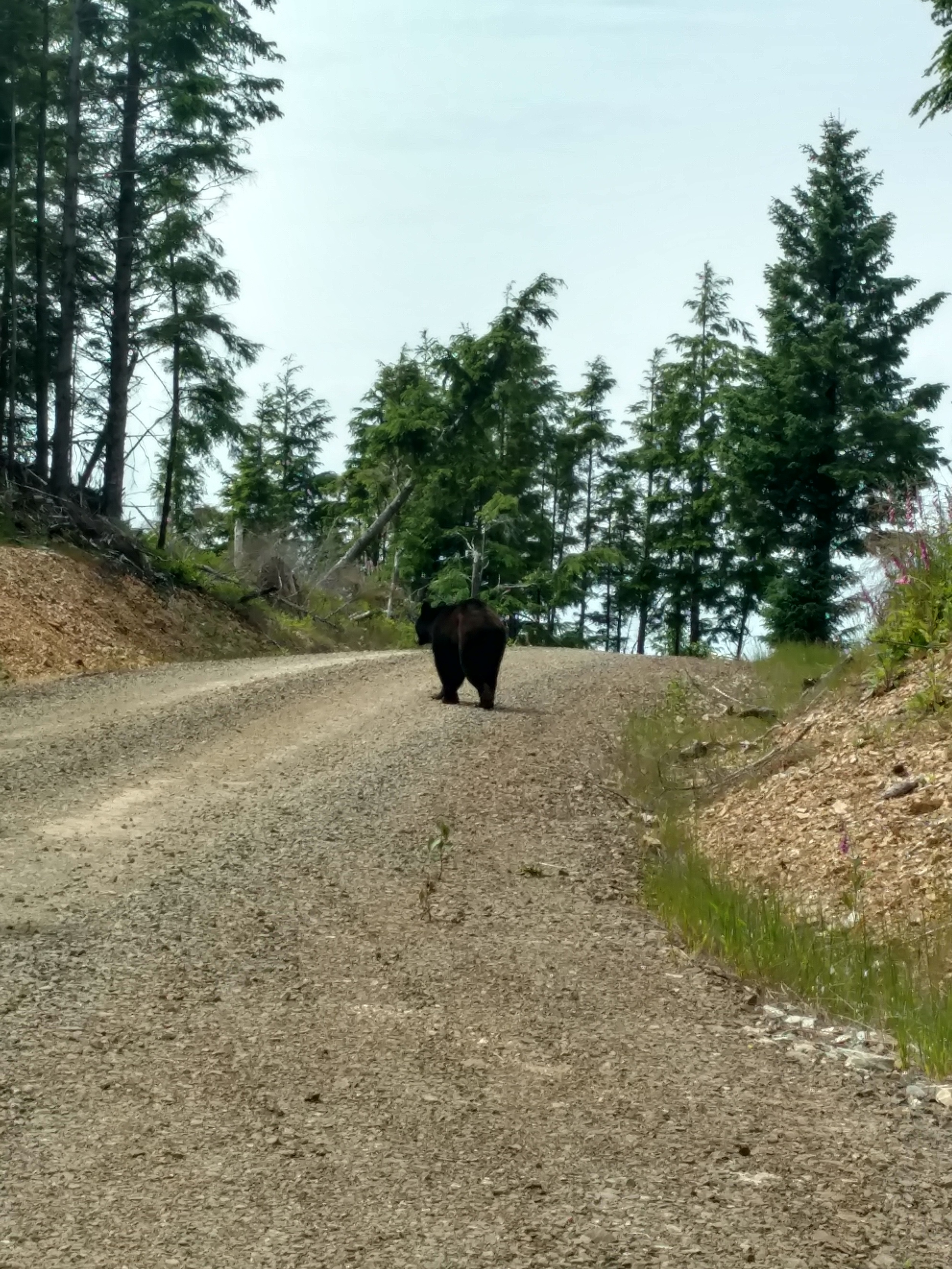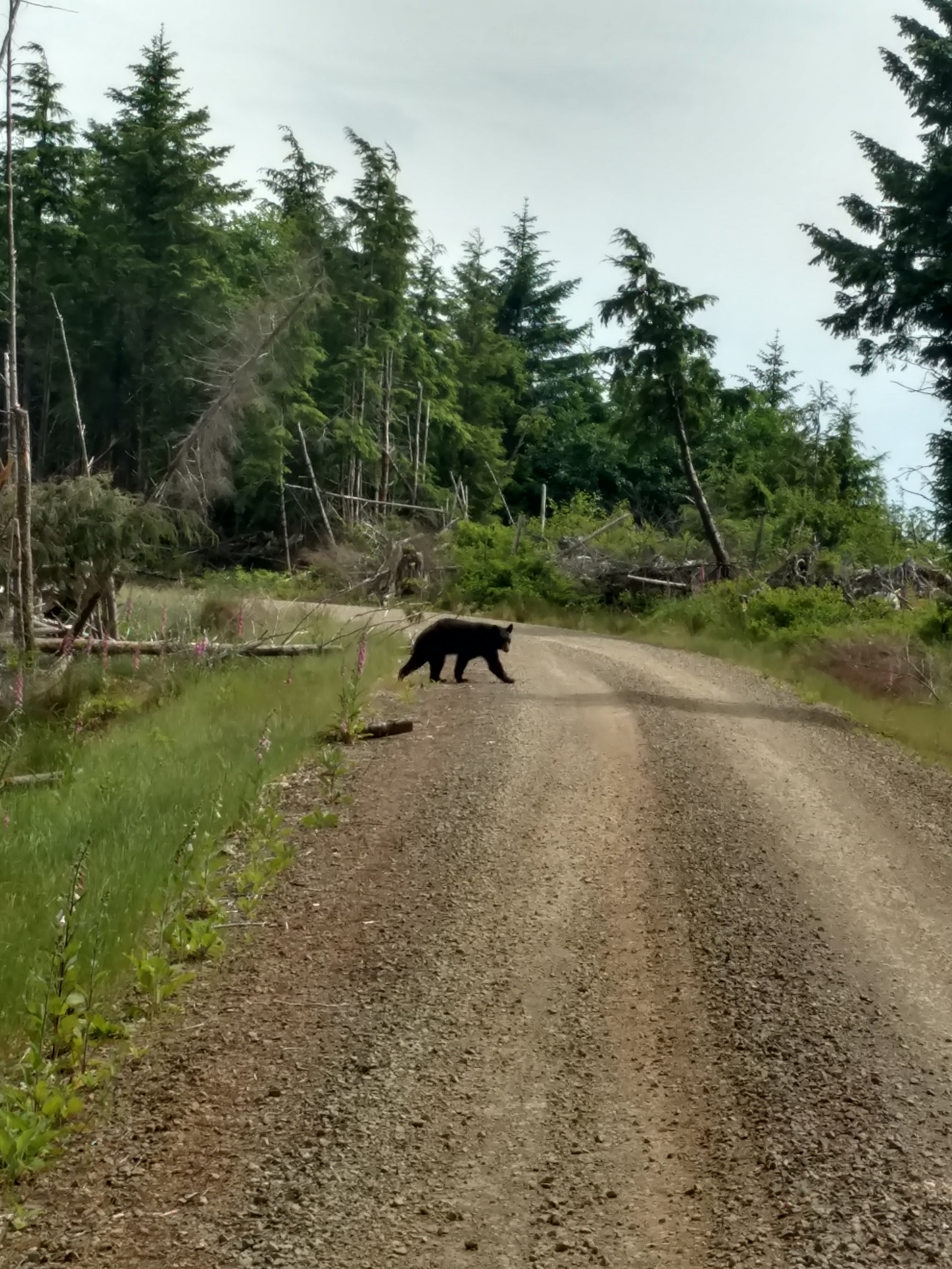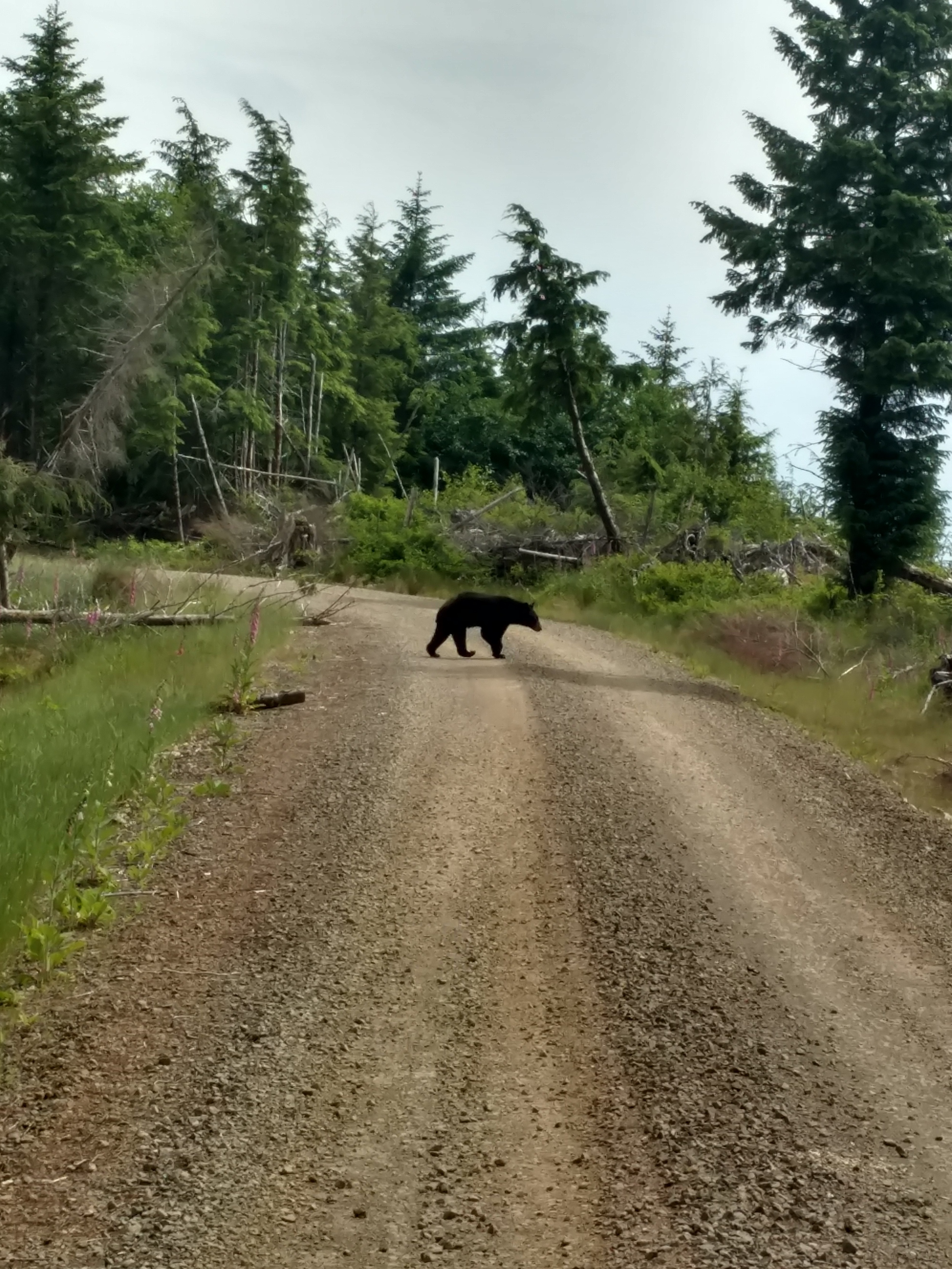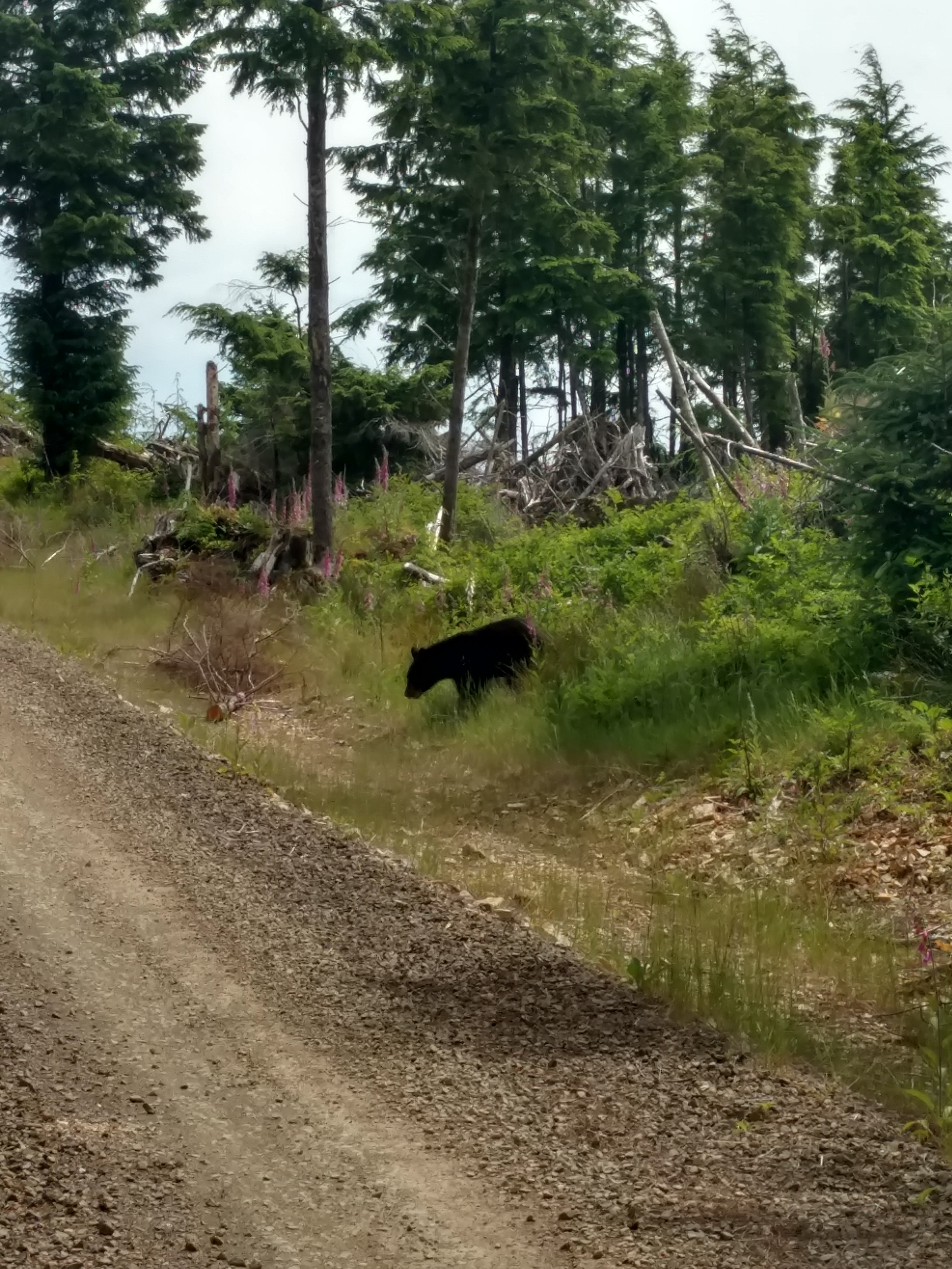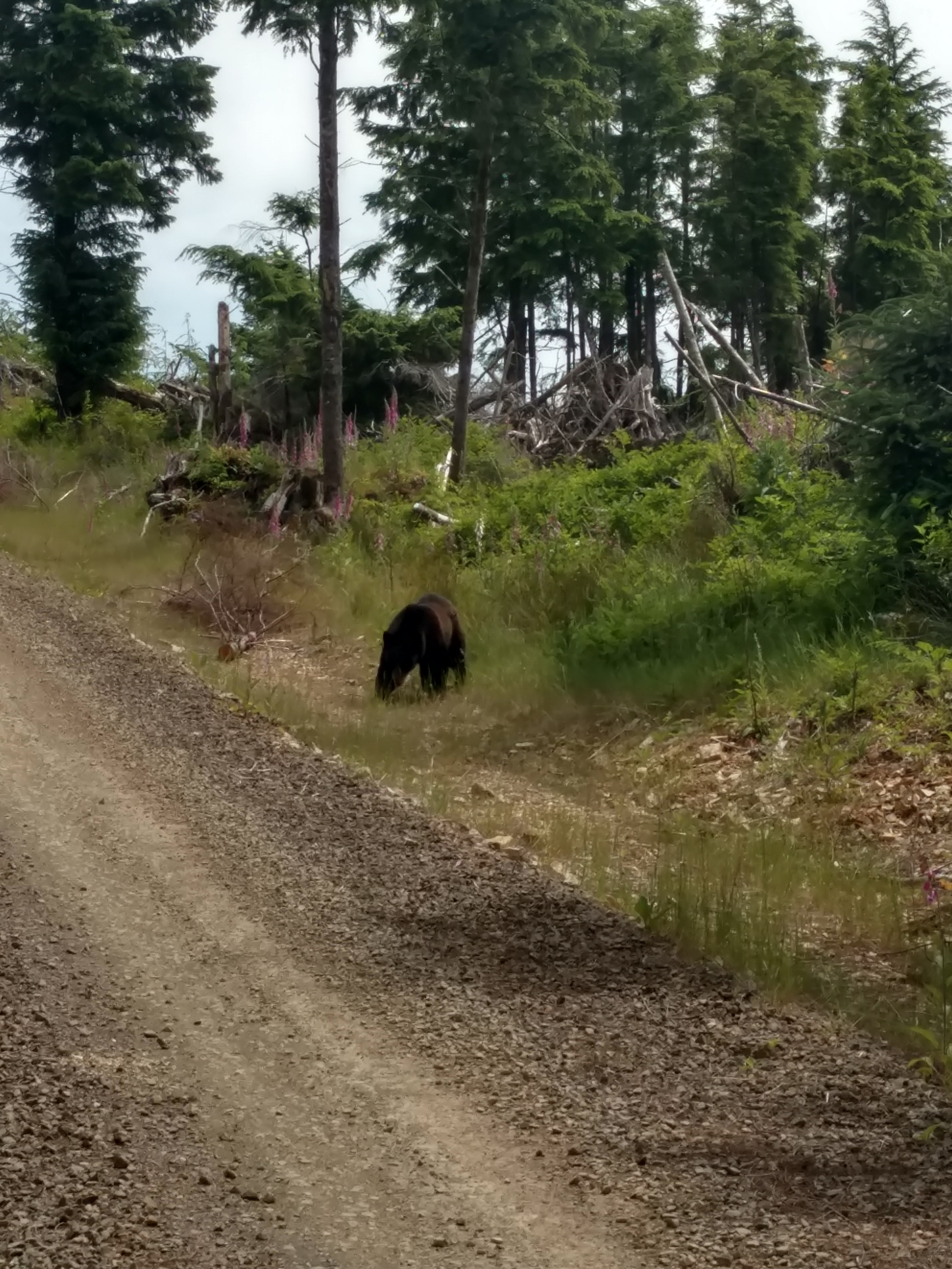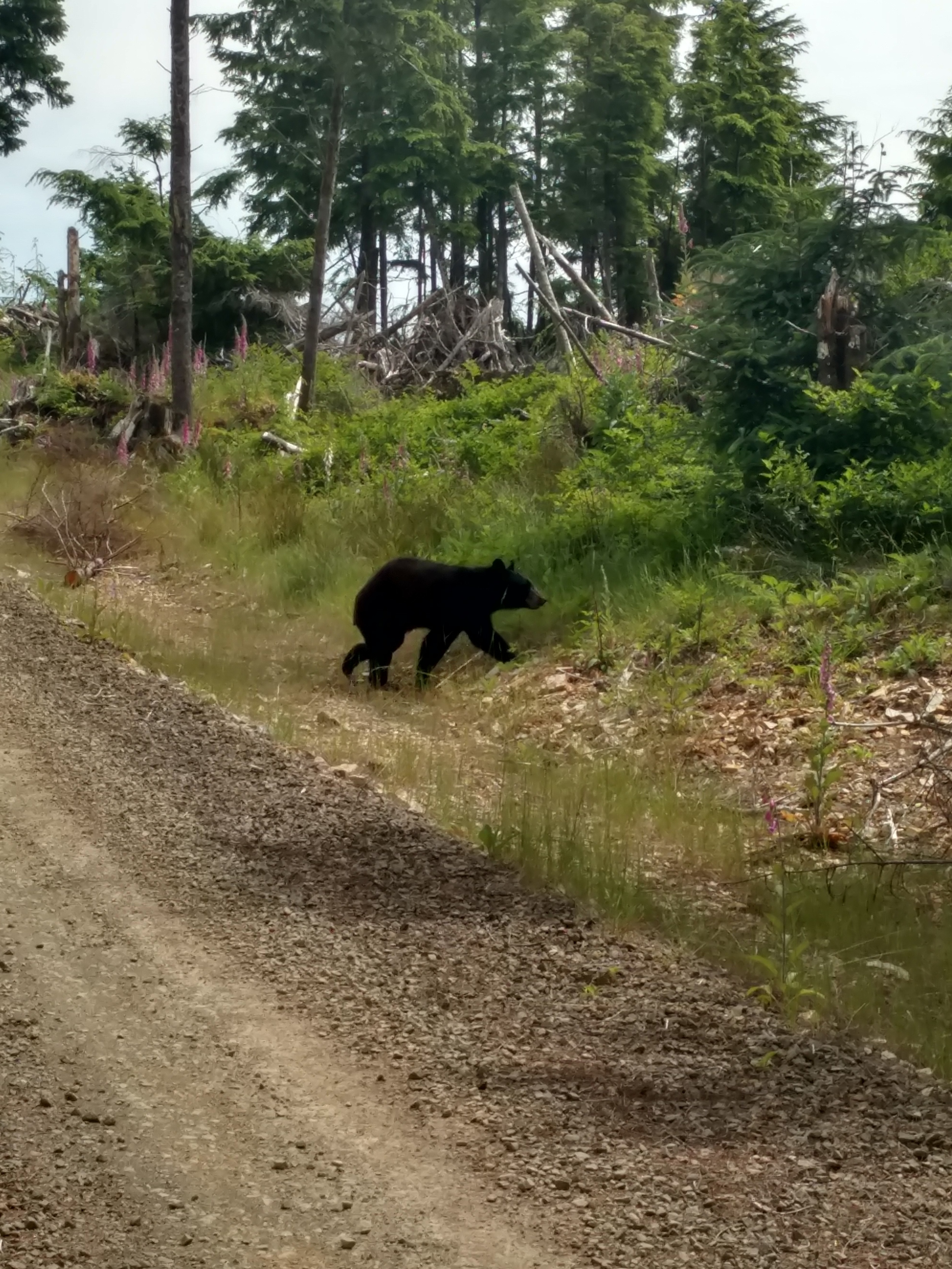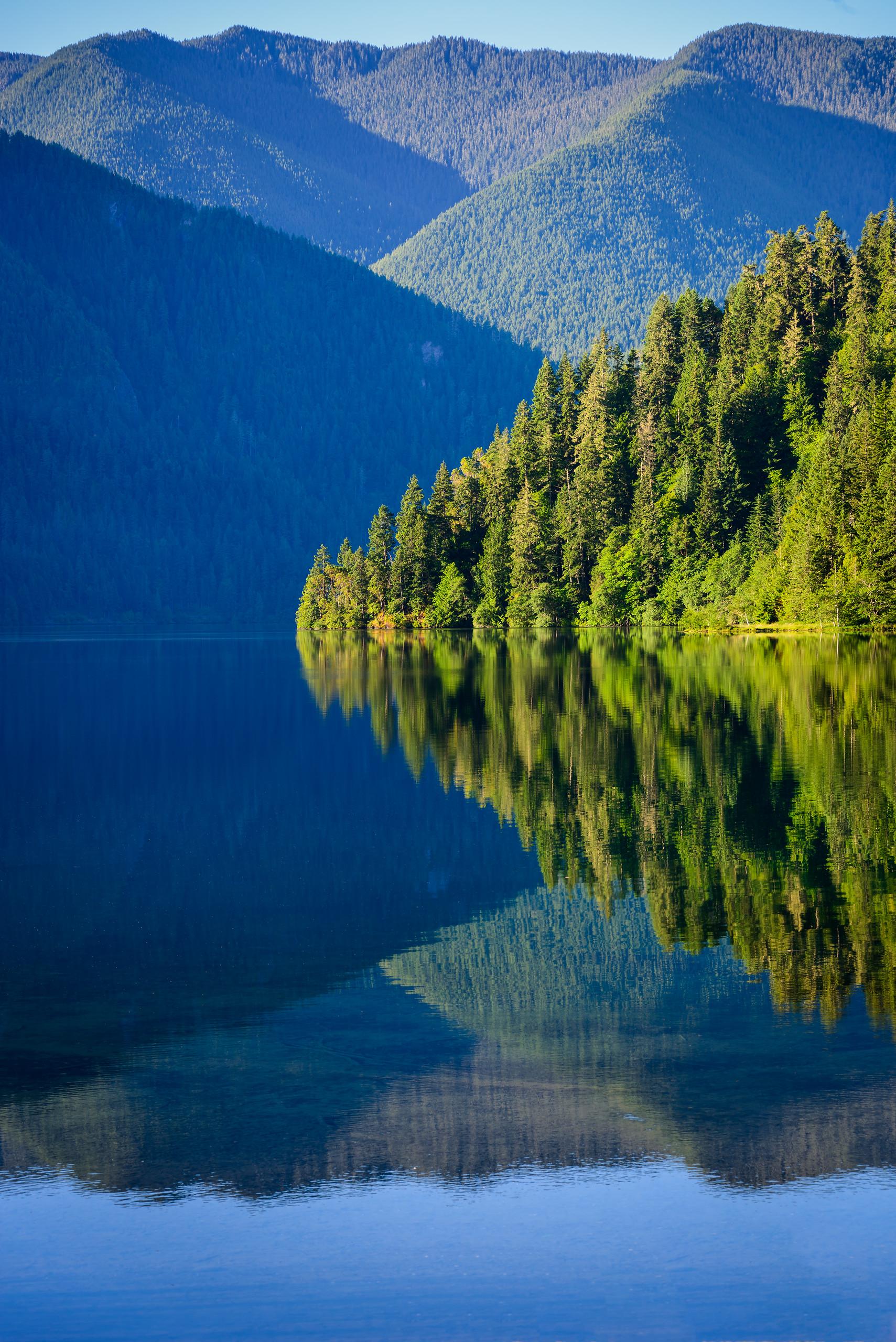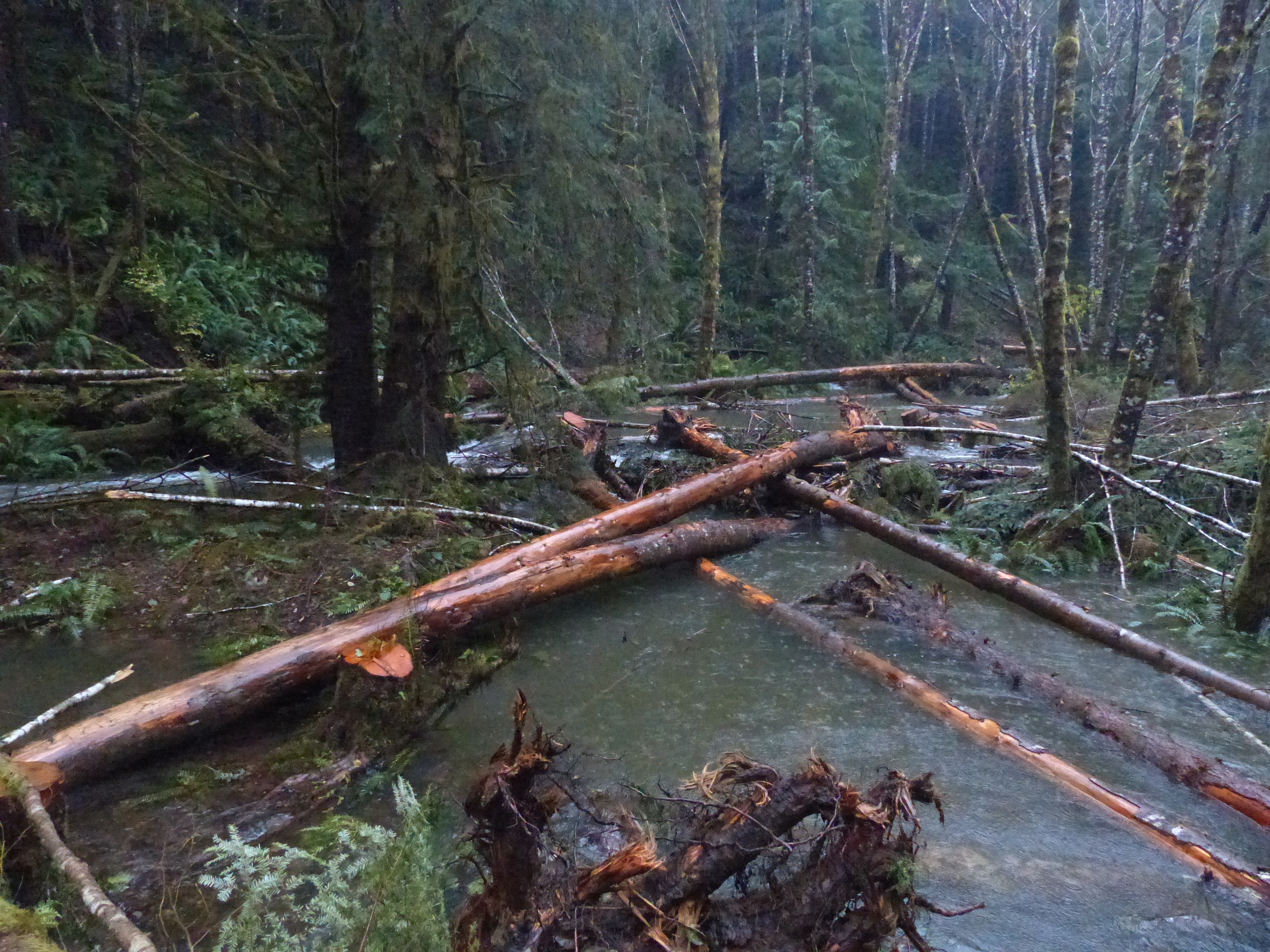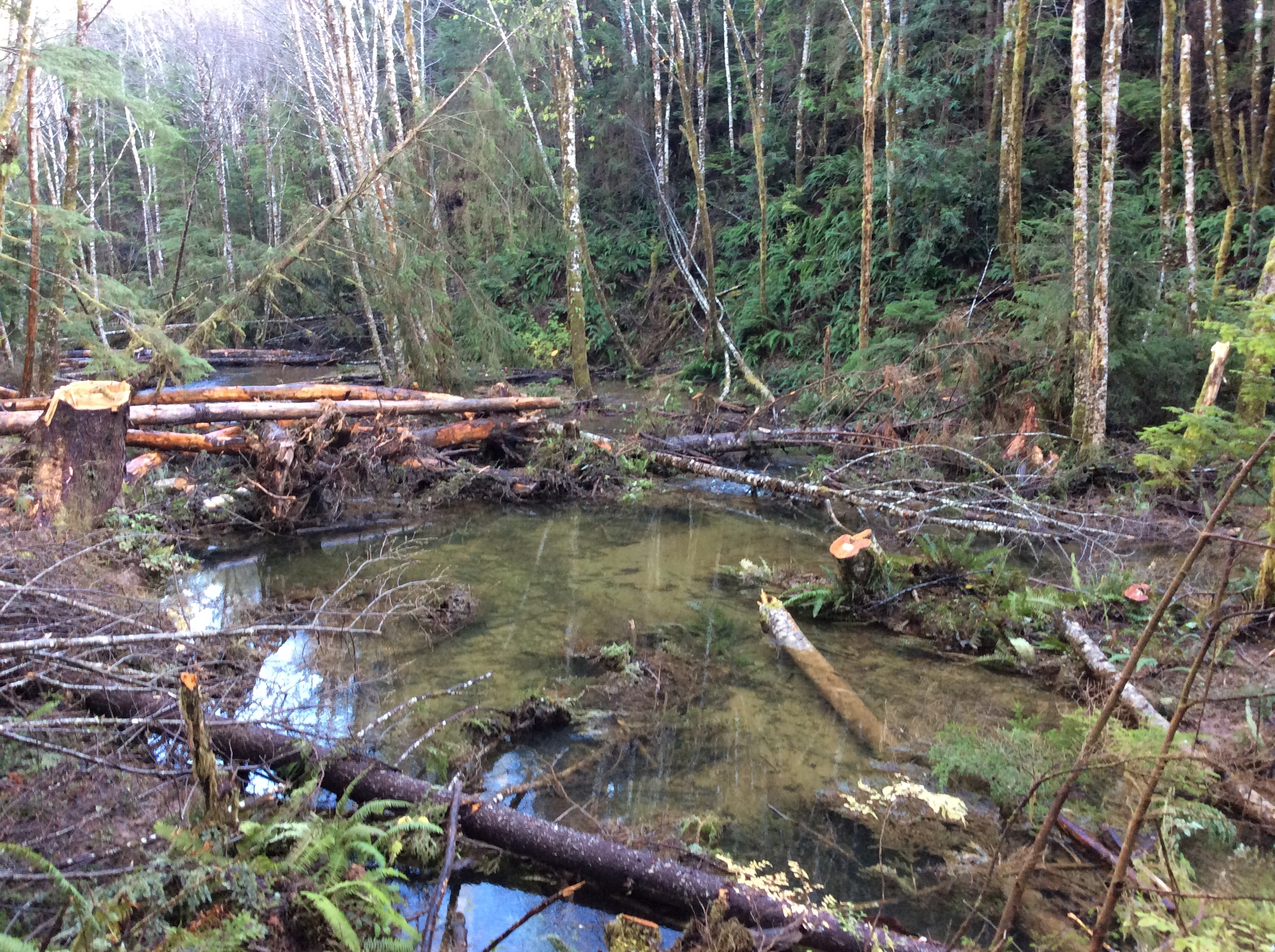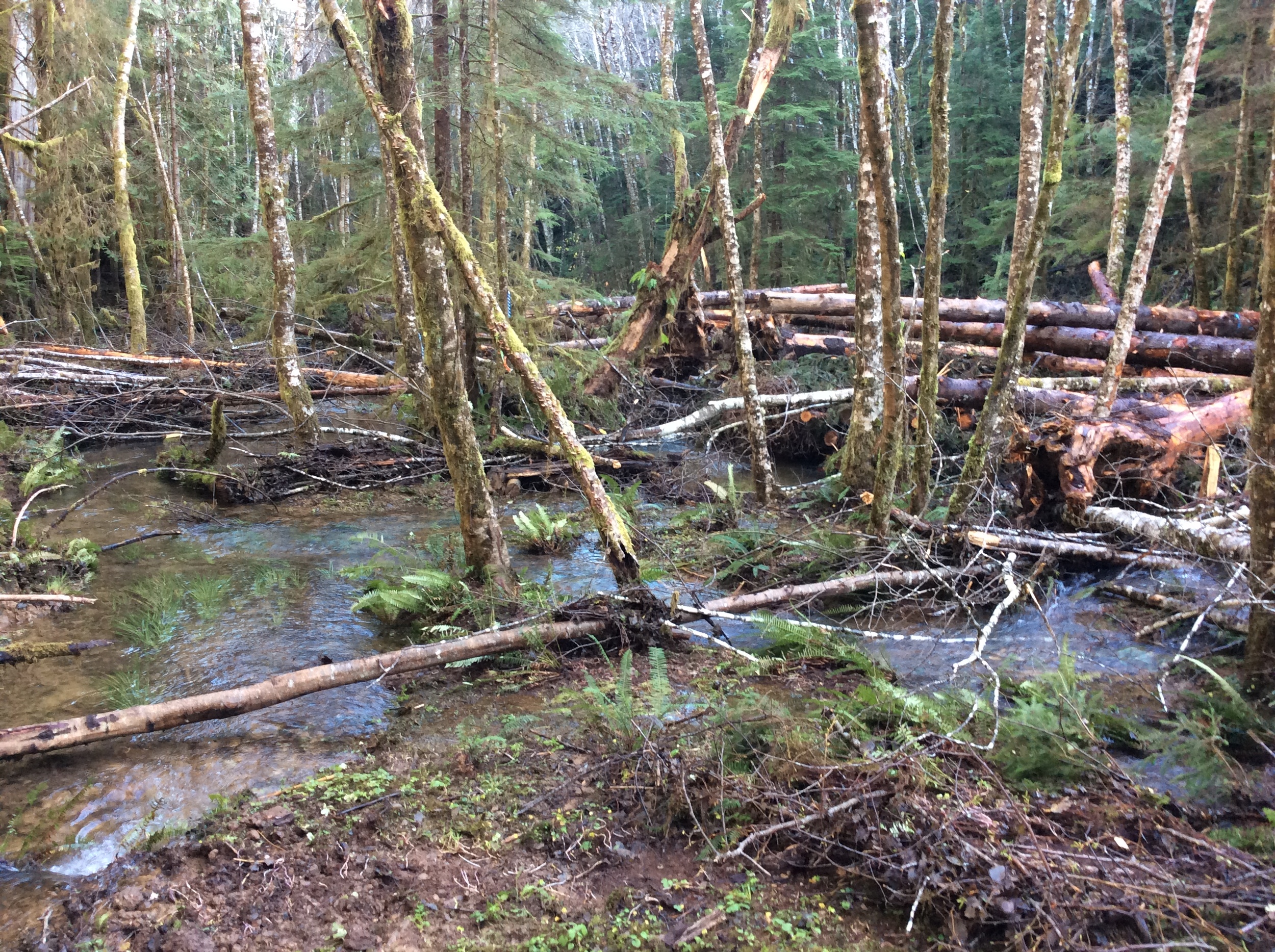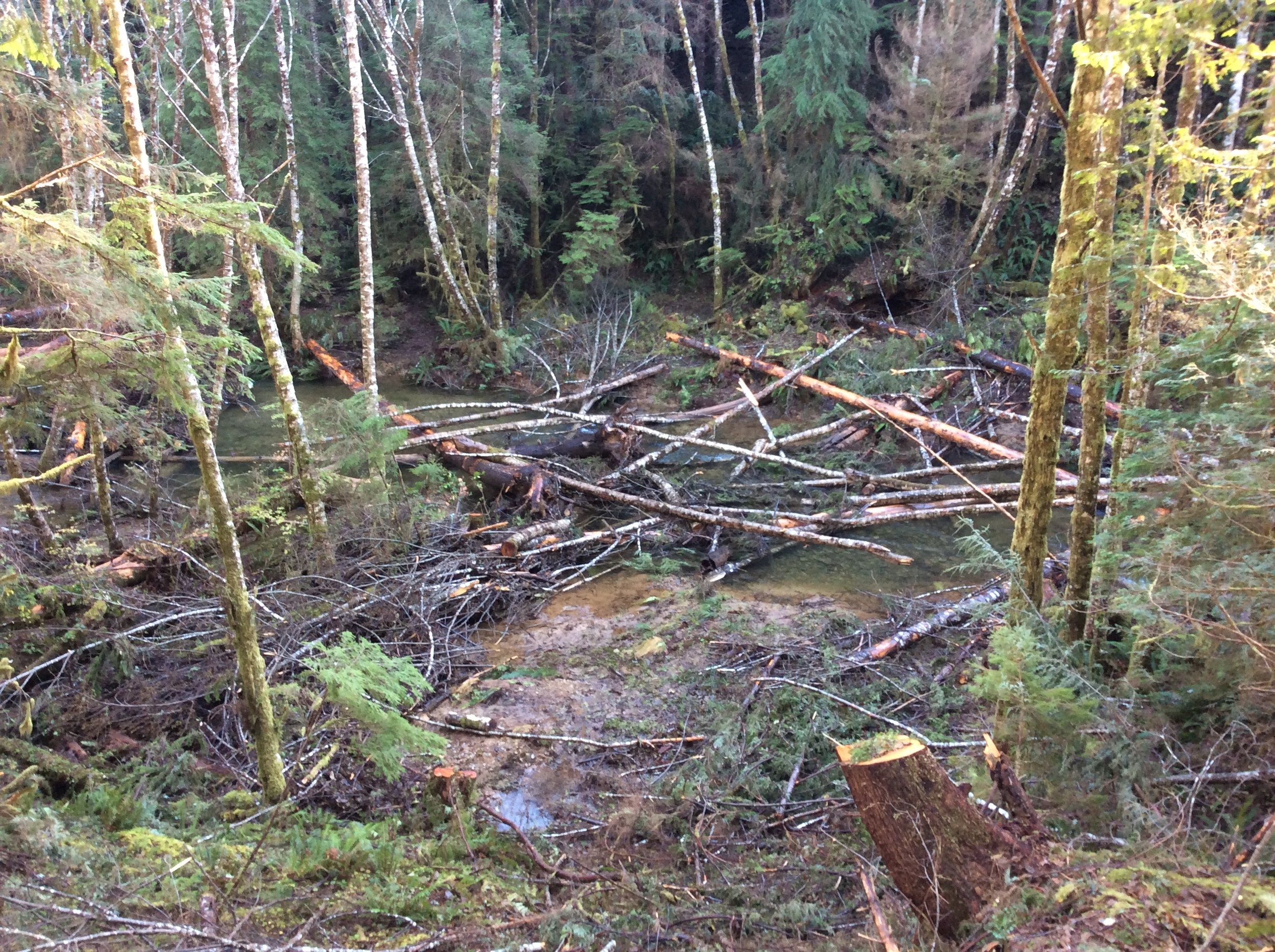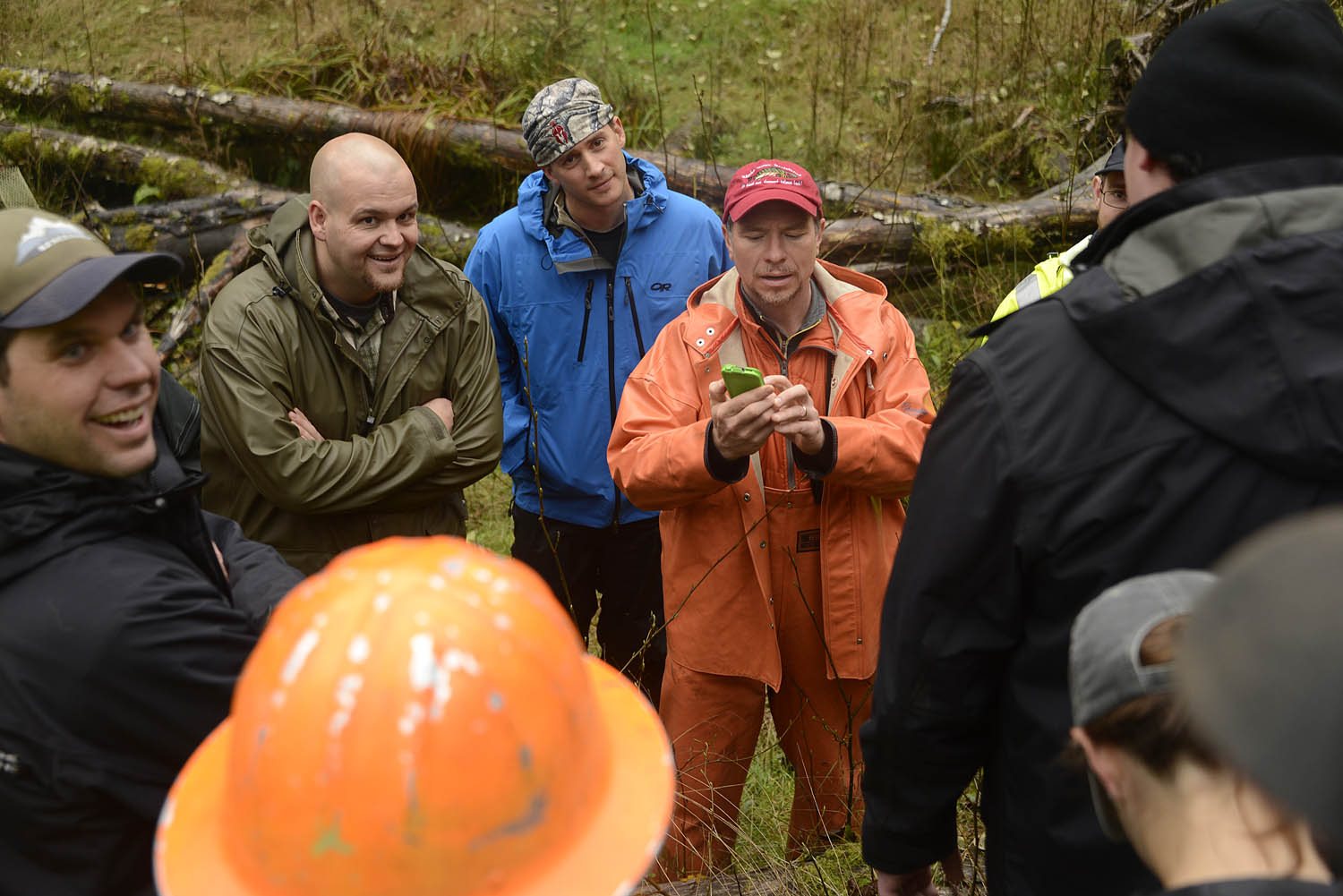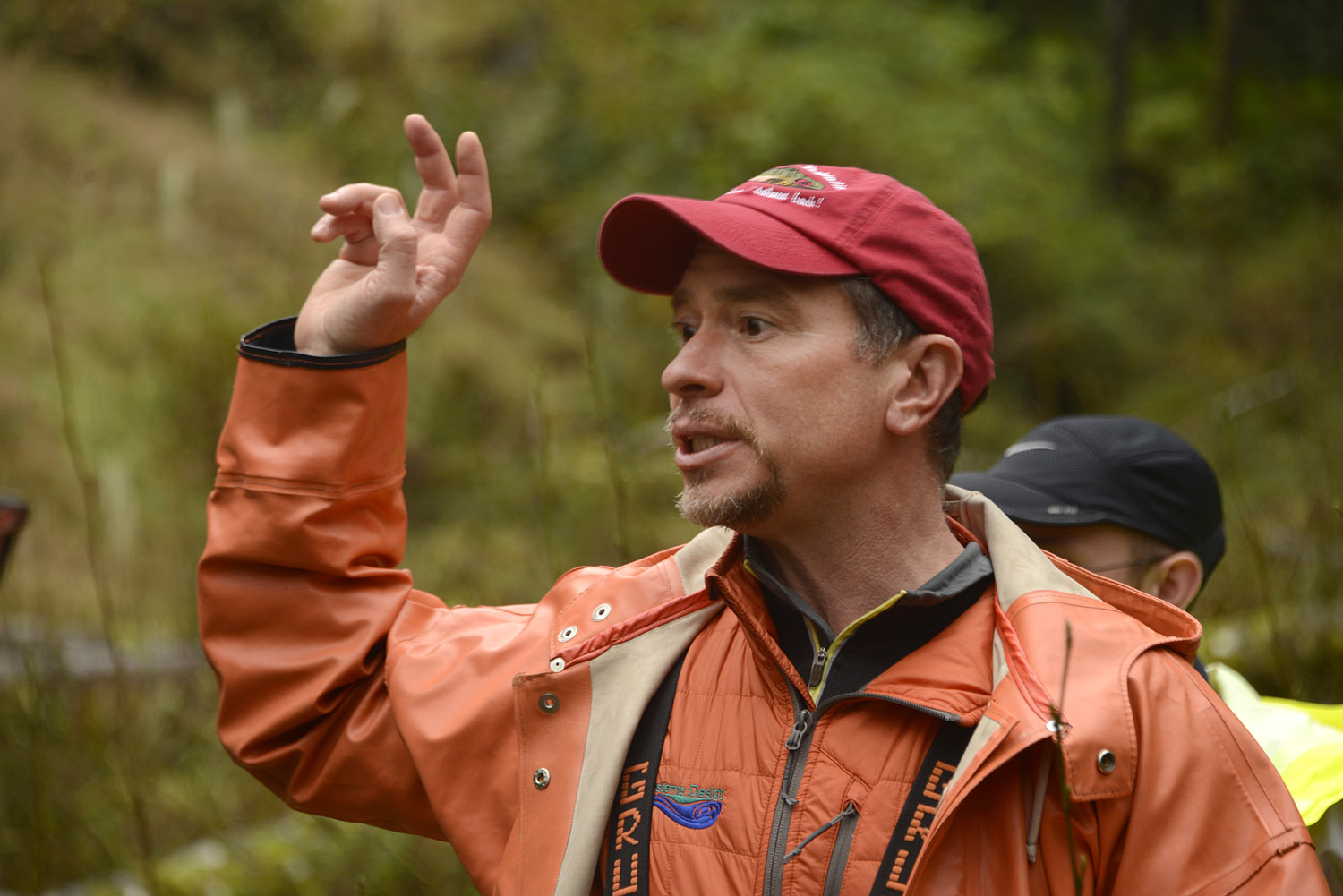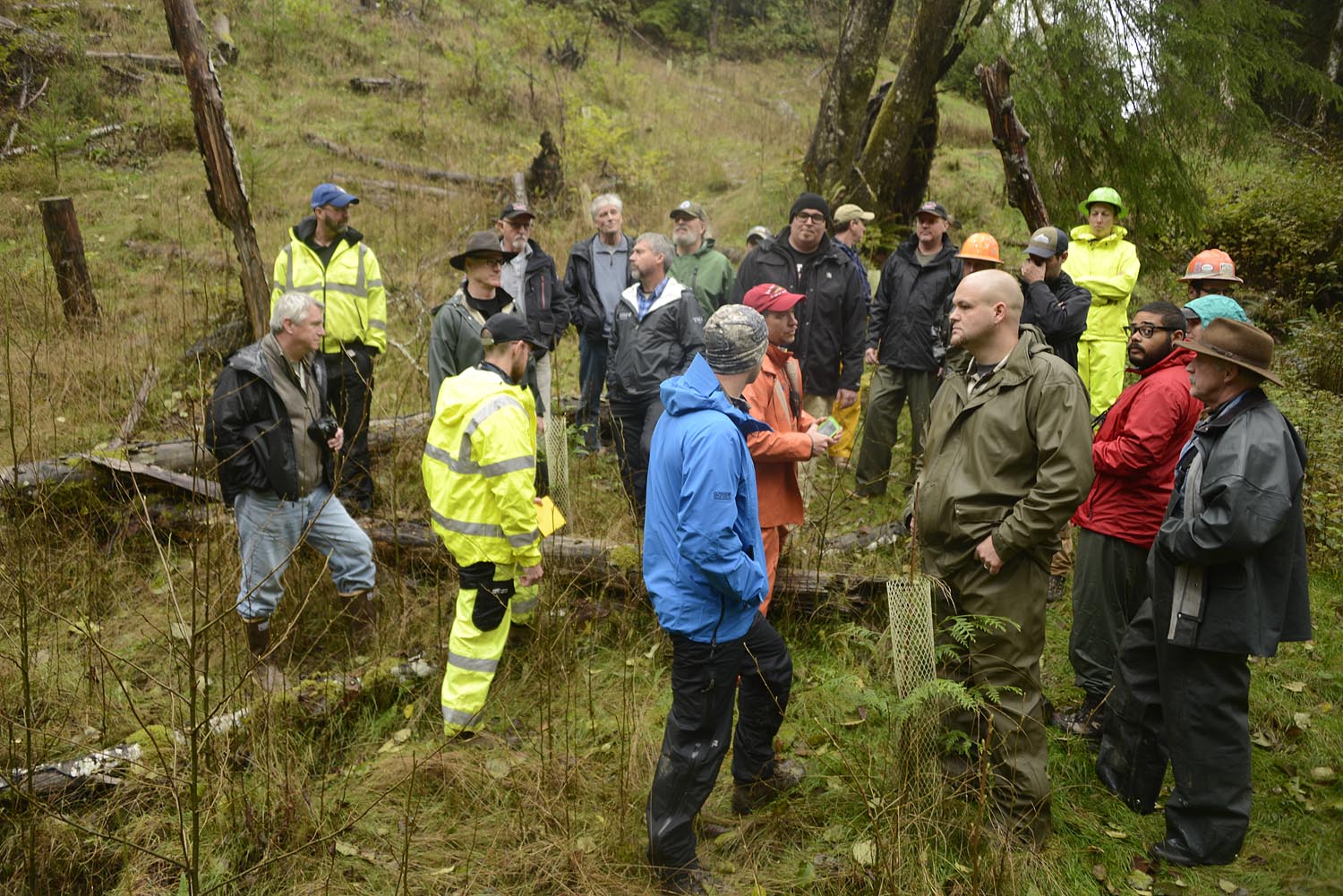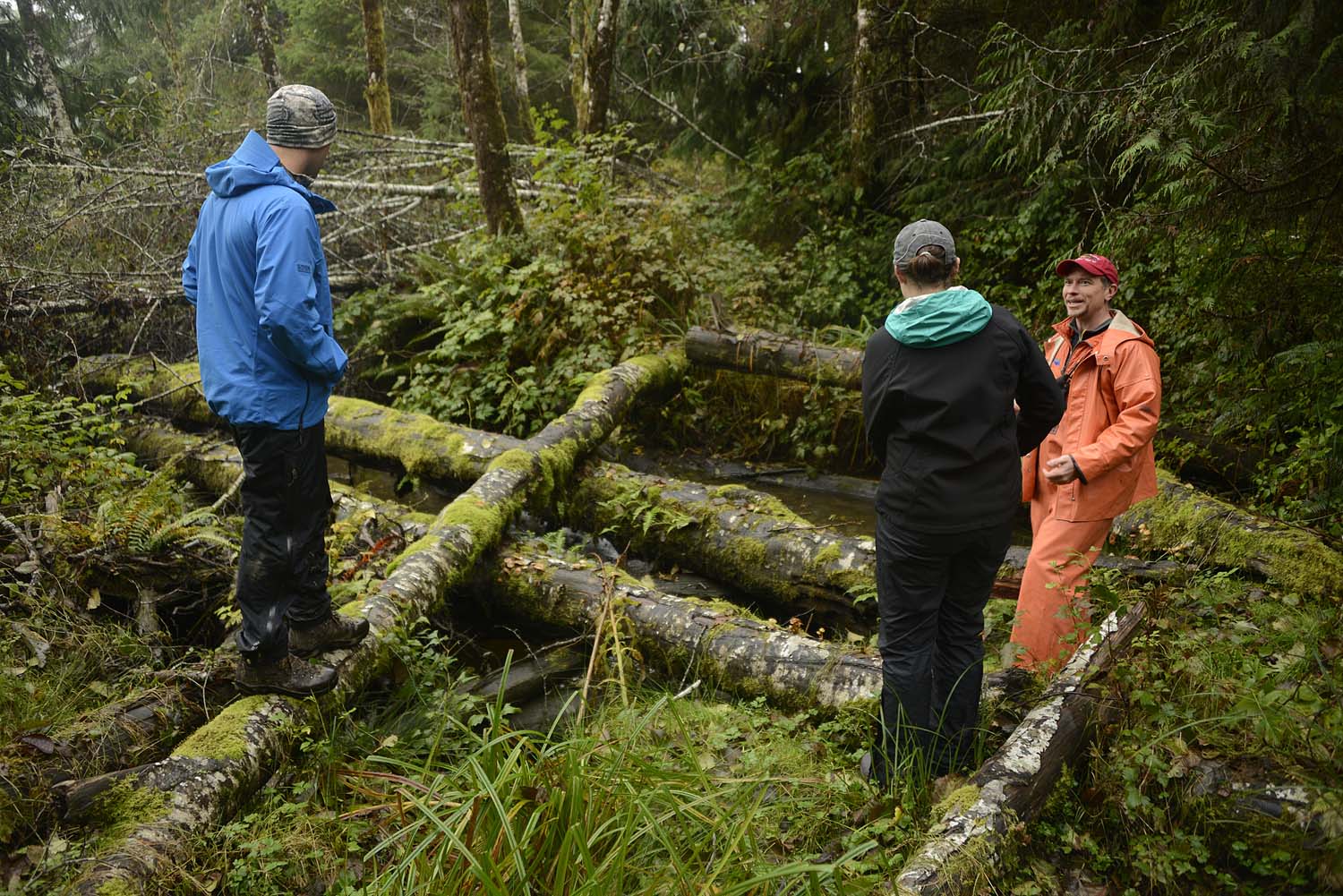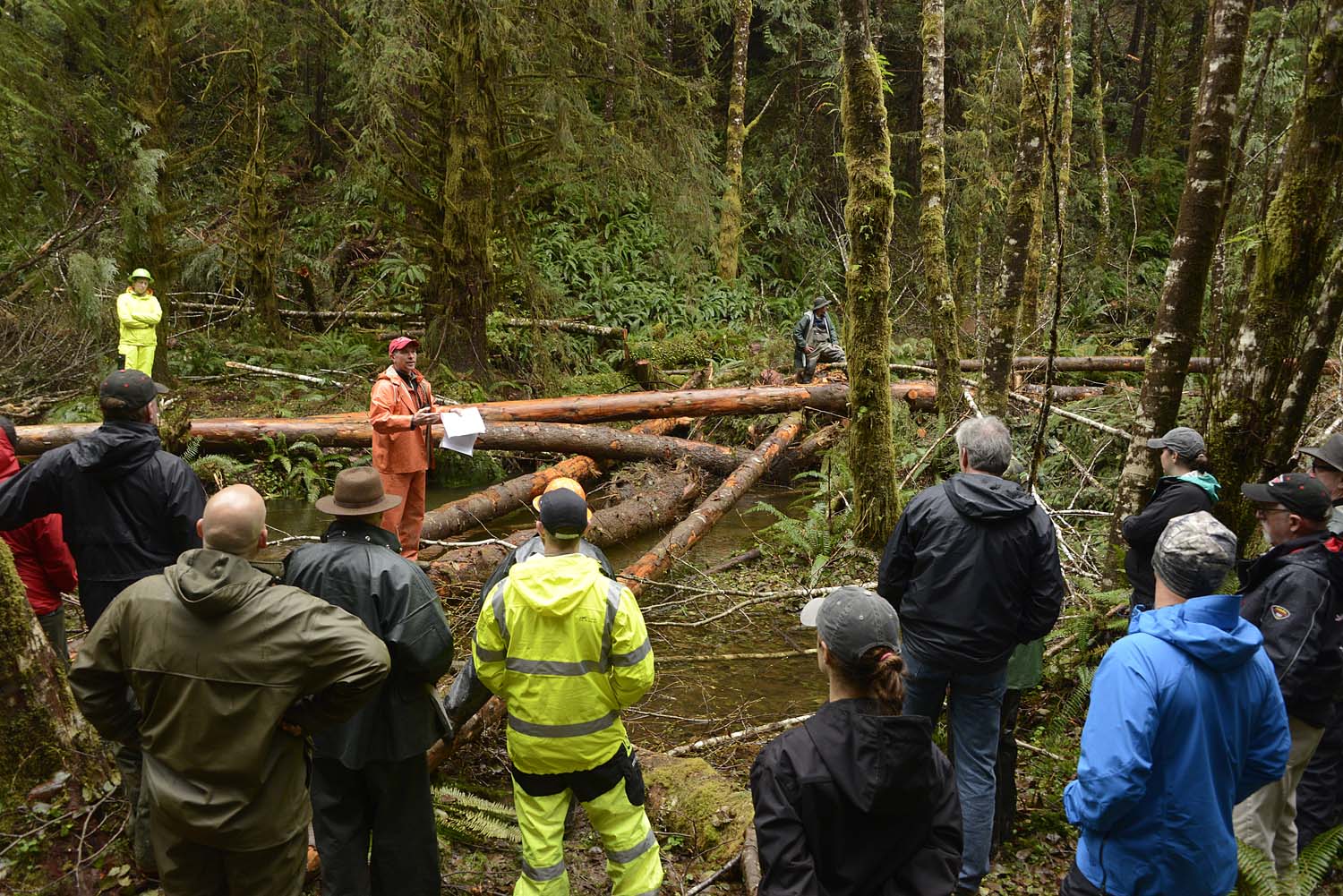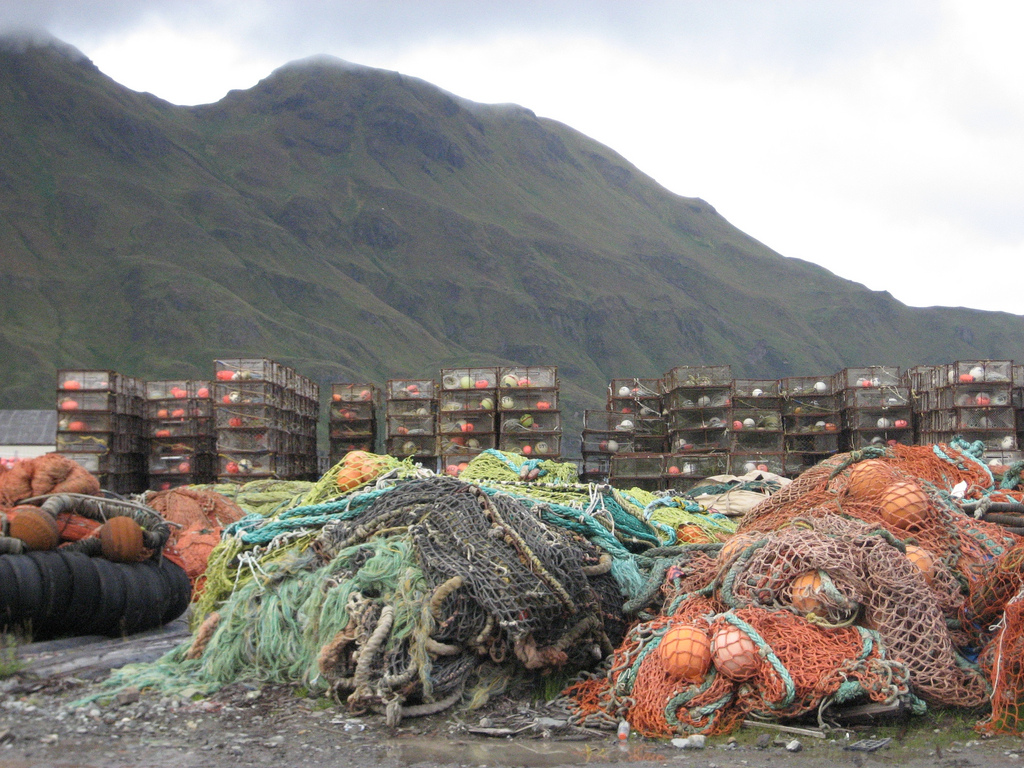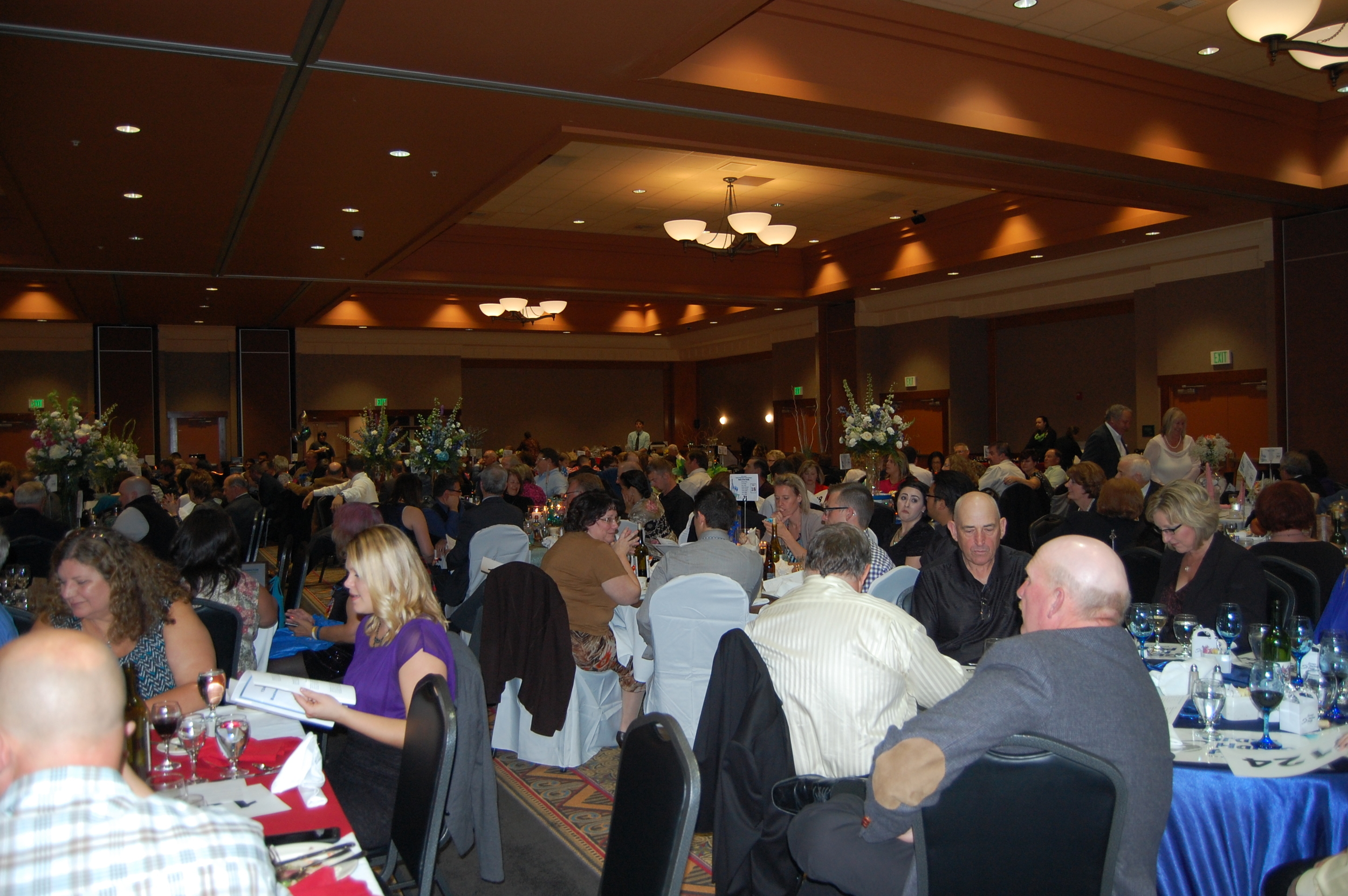The Nature Conservancy’s Washington chapter has filed a letter with the National Marine Fisheries Service supporting the Makah Tribe as they seek to exercise their treaty right to engage in whaling off the Pacific Coast.
Fisheries Market Analysis - Request for Proposals
Creating a Sustainable Coast
You can make a difference for sustainable business on the Washington Coast.
Photographed by Tim Regan, Flickr Creative Commons
It’s easy to invest in big Wall Street backed businesses, but next to impossible to invest in a local Main Street business in your community – especially if that business is a startup. The Washington Coast Works Sustainable Small Business Competition is changing that with a crowd funding campaign that lets ordinary folks contribute what they can afford to help emerging entrepreneurs launch new businesses in rural and tribal communities on the Washington Coast. First prize is $10,000 in startup funding, with multiple runner up prizes. See the Washington Coast Works website for details.
This year’s Coast Works entrepreneurs include a cultural tourism business, a wood boat kit manufacturer, a beekeeper, a construction business, a chocolatier, a tiny homes builder, a food truck, a dog boarding business, a permaculture farm, a stump grinder, a nature-inspired fitness company, a sustainable vegetable and hog producer, and a manufacturer of art equipment. All are “triple-bottom-line” businesses designed to generate profits with significant social and environmental benefits.
“How awesome that all of us can contribute to the Coast Works prize money this year,” says Coast Works intern Sarah Haensly who designed the campaign. “Web-based crowd funding now makes it possible for anyone to contribute what they can afford – without calling up your local stock broker.”
Tanikka Watford knows how hard it is to raise startup funding for a small business. She needed significant capital to launch Deep Roots Foods, a Tumwater-based small-scale food co-pack food processing business.
“I was fortunate to find local investors through Social Venture Partners’ FastPitch competition last year, but those opportunities are rare,” says Watford. “I think it is amazing that you all are making it possible for people in Coast Works communities to participate directly in their local economic development!”
Visit www.wacoastworks.org for more information
Quinault Indian Nation named Title Sponsor for Washington Coast Works Sustainable Business Plan Competition
June 21, 2016 (Seattle, Washington) — Washington Coast Works is pleased to announce the Quinault Indian Nation as the Title Sponsor for the 2016 Sustainable Small Business Competition. This year’s business training is underway and will conclude July 22-24 during the Entrepreneurship Summit at the Olympic Natural Resource Center in Forks, Washington. At the Summit, participants will develop their presentation pitch and polish their business plans for a chance to vie for up to $20,000 in startup financing. Winners will be announced in October.
This year’s participating entrepreneurs include a cultural tourism business, a wood boat kit manufacturer, a bee keeper, a construction business, a chocolatier, a tiny homes builder, a food truck, a dog boarding business, a permaculture farm, a stump grinder, a nature-inspired fitness company, a sustainable vegetable and hog producer, and a manufacturer of art equipment. All are “triple-bottom-line” businesses from coastal communities in Grays Harbor, Jefferson and Clallam Counties and designed to generate profits with significant social and environmental benefits.
“The Quinault Indian Nation is a critical partner for us,” said Eric Delvin, Emerald Edge Project Manager at The Nature Conservancy. “Their commitment to conservation of their natural resources and to sustainable economic development is clearly demonstrated by their sponsorship of Washington Coast Works.”
Other 2016 competition sponsors include Enterprise for Equity and Washington Department of Commerce.
Washington Coast Works is an initiative of The Nature Conservancy in collaboration with Enterprise for Equity (with support from a USDA Rural Business Development Grant), the Center for Inclusive Entrepreneurship, and the Ta’ala Fund, a native community development financial institution that supports business development in western Washington coast tribal communities.
The complete calendar of events leading up to the competition is available at www.wacoastworks.org. Contact at Mike Skinner info@wacoastworks.org to learn more about the competition, to volunteer to mentor or judge, or to request information about more sponsorship opportunities.
World Oceans Day Instagram Meetup
World Oceans Day was the perfect opportunity to get outside, enjoy nature and make a difference. We joined our local instagram community by celebrating our oceans and enjoying an amazing sunset along the Washington coast at Ruby Beach. Check out some scenes from the day in the video above!
Learn about our work along the coast and the science-based strategies that will help ensure healthy and productive oceans.
Black Bears Roam at Ellsworth Creek
Written & Photographed by Kyle Smith, Field Forester
Late Spring at The Nature Conservancy’s Ellsworth Creek Preserve in Southwest Washington is a magical place for wildlife viewing. Spring rains bring out amphibians in huge numbers such as the tailed frog, ruffed skinned newts, Columbia torrent salamander, pacific giant salamander. In fact, a survey conducted by the Washington Natural Heritage Program and TNC scientists found that Ellsworth Creek had on of the highest populations of amphibians in Washington State. Amphibians aren’t the only things that roam the misty forest floors in Ellsworth Creek.
Black bears come out of their winter torpor to forage on grasses, berries and the fresh sapwood of actively growing trees. Southwest Washington and in particular Ellsworth Creek have some of the largest numbers of black bears in the lower 48. We were lucky to come across these beautiful black bears at the preserve recently!
The huge old growth forests of Ellsworth Creek offer excellent denning sites and the productive soils and over eight feet of annual prescription grow huge thickets of huckleberries, salmon berries and salal berries that bears plump up on all summer long. High among the forested trees tops a small robin sized bird called the marbled murrelet flies in at over 60 mph to nest up in the old growth canopy with in the Ellsworth Creek. These small robin sized birds rare birds spend most of their life at sea but in late spring and early summer they can be seen flying in over Ellsworth Creek to use the large old growth tree branches to nest and raise their young before returning to the sea in late summer. Just off to the west looking down on to Willapa Bay, tens of thousands of dunlins and sandpipers swarm to Willapa Bays pristine waters to feed upon invertebrates with in the mudflats of the Bay.
Mesmerized by a Golden Coast: June Photo of the Month
Written & Photographed by Tu Do, Freelance Cinematographer
I once made it a goal to experience the sunrise and the sunset every day for an entire year. There is a beautiful quote that says, "There's a sunrise and a sunset everyday. And you can choose to be there for it or you can put yourself in the way of beauty." And I took that to heart. I learned from that experience that no matter how routine my day was, the sunrise and sunset never looked the same.
I am very grateful to be able to experience the beauty that the Northwest offers. Having spent a lot of my youth in the flat lands of Florida, I love driving around the winding roads of Oregon and Washington, always something new around the corner. It can be a snow capped mountain, giant sand dunes, pristine lakes, and towering waterfalls.
This photo was taken right at the end of the day at Second Beach near La Push. Many folks had set up tents and bonfires, enjoying this beautiful afternoon. As the skies started to wash into a twilight blue and purple, many people began to walk back to their cars. I had a feeling the sun wasn't quite done with impressing us all. So my girlfriend and I sat and enjoyed the view for a little longer, and the sun peeked behind the clouds one last time and set the sky ablaze. It only lasted a good 5 minutes so I asked my lovely lady to pose between the two rocks and created my favorite shot from the evening.
Nature truly never ceases to amaze. As we all go about our day, don't ever forget to look around your surroundings. It's the moments that you don't expect that you'll always remember.
Tu Do is a roaming cinematographer that has spent time all over the United States. Currently based in San Francisco traveling the world and shooting cool content for Twitch. You can find more of his film work at www.twodough.com and his photography on Instagram: @twodough.
Sustainable Small Businesses Move Forward with Washington Coast Works
MAY 31 (Seattle, Washington) — Fifteen emerging entrepreneurs from coastal communities in Grays Harbor, Jefferson and Clallam Counties are participating in an intensive 8-week business development training provided by Enterprise for Equity as part of the 2016 Washington Coast Works Sustainable Small Business Competition.
Participating businesses include a permaculture farm, a wood boat kit manufacturer, a construction business, a chocolatier, a bee keeper, a tiny homes builder, a dog boarding business, a cultural tourism business, a nature-inspired fitness company, a stump grinder, a sustainable vegetable and hog producer, a manufacturer of art equipment and a food truck — all “triple-bottom-line” businesses designed to generate profits with significant social and environmental benefits.
The training concludes in late July with an Entrepreneurship Summit to be held at the Olympic Natural Resource Center in Forks, Washington. At the Summit, participants will connect to a team of volunteer mentors and advisors who will help them develop their pitch and polish their business plans for presentation to a panel of judges in mid-September, and for a chance to win up to $20,000 in startup financing. Winners will be announced in October.
“It (the competition) gave me a new lease on life — something that I want to do for my community. I want to build our community”, said Jean Ramos, a winner from last year’s competition working to launch a sustainably foraged Labrador tea business.
Liz Ellis, another winner in last year’s competition, used her award to launch East Aberdeen Community Farm.
“I feel so fortunate to have been part of the three days of very intensive workshops,” Ellis said about last year’s Summit. “For me, the most valuable part of the competition was learning and being inspired by professionals and people in business, coaches and economists, and the fellow applicants from the north and the south.”
Washington Coast Works is an initiative of The Nature Conservancy in collaboration with Enterprise for Equity (with support from a USDA Rural Business Development Grant), the Center for Inclusive Entrepreneurship and the Ta’ala Fund. The program is designed to diversify the economies in Grays Harbor, Jefferson and Clallam Counties and contribute to a new vision of sustainable community and economic development on the Washington Coast.
The complete calendar of events leading up to the competition is available at www.wacoastworks.org. Contact Enterprise for Equity at (360) 704-3375 ext. 3 or Mike Skinner info@wacoastworks.org for more information about the competition.
Story Contacts
Robin Ohlgren
WA Coast Works Fundraiser
P | 208-301-1011
E | robin@ohlgren.com
Liz Ellis
East Aberdeen Community Farm
P | 360-780-0349
E | harborsolar@yahoo.com
Jean Ramos
SovereigNDNTea
P | 360-780-0349
E| jeanniebug.123@gmail.com
Ellsworth Creek's Log Jam Extraordinaire
Written by Jeanine Stewart, volunteer writer
Think of a Chinese finger trap. Those little woven paper toys have one thing in common with a log jam: they tighten up with the application of outside force.
This is the type of contraption our Willapa Area Forester David Ryan is helping to install 47 times over down a one-mile stretch of Ellsworth Creek.
It’s part of the Ellsworth Creek restoration project – a major component of our overall restoration strategy for the 8,100 acre Ellsworth Creek Preserve.
The plan may sound like a head scratcher. After all, could there possibly be environmental benefit from jamming up certain points in the river with logs? The short answer is yes.
For one, log jams restore complex structure to the ecosystem in this section of the river. Literally and figuratively, these logjams provide a cascade of many benefits that help rehabilitate the watershed.
Decades ago, people engaged in what they termed “stream cleaning” – getting rid of the wood in the water – in an effort to improve the salmon habitat, Ryan says. He adds this backwards thinking created an oversimplified and more sterile riverine habitat. The salmon need the wood in the water to foster spawning habitat, security structure and also for nutrient cycling.
The log jams also re-engage floodplains – that area of low-lying ground adjacent to the river – in order to restore the habitat. This is important since floodplains create productive forests, store and filter water for streams and create a complex stream structure, which supports larger and more diverse fish populations. In return, healthy salmon populations help return nutrients to the forests as they complete their life cycle.
But for Ryan, there are far more benefits than simply the outcome of this project. For him, the beauty lies in the journey.
He gets up every morning knowing he's about to head out into the wilderness, into the thick of the forest along Ellsworth Creek, to direct the installation of these log jams. Each of the 172 trees he’ll have installed by September takes anywhere from 10 minutes to one hour, as each presents its own unique problem to solve.
"It's so much fun and it's so out of the box," he says, "because the intent of the project was pretty extensive, as the engineer said this was the rehabilitation of an entire system. So right there, when you look at it from that perspective, that's out of the box."
Similar projects of this sort will start with one, or maybe up to three log jams. He's already done over 30 and is well on his way to completion of all 47 by September, all using trees that were already scheduled to be felled as part of our other work on the preserve.
Ryan helps direct the process of cutting the trees down and then placing them in the water by lowering them, via lines attached to cranes, into the stream. This means relaying plans to the loggers and ensuring that when the cranes lift the logs up and then lower them into the streams, they land in the correct place. Besides the excitement of the sheer magnitude of this project, the capabilities, dedication and hard work of the people Ryan works with are a major part of the thrill for him. That includes Natural Systems Designs and its engineer Mike Hravocek, who surveyed the stream and drew up the plans; as well as White & Zumstein, who have been contracted to do both the logging and the installation.
“From the landing to the creek, the sawyers, equipment operators, chasers, and rigging crew worked hard in a challenging environment and not only did a great job with the logjams but the logging as well,” he explains. “The rigging crew was particularly noteworthy for their ability to understand the purpose of each design and make those designs manifest on the ground as they were drawn up and intended. The whole crew understands the physical forces at work, has a positive attitude and is very mindful, which makes me feel a lot safer on site and makes compliance a lot easier. And their innovative approach to using heavy equipment for a different purpose makes this project a lot of fun to be part of.”
LEARN MORE ABOUT OUR WORK AT ELLSWORTH CREEK
After Sunset: April Photo of the Month
Written and Photographed by Jason Neuerburg, Northwest Photographer
Curiosity fuels a lot of my adventures. I love driving forest service roads just so I know what's at the end of them. Same goes for hiking trails or a campground space. There's so much to discover in the Northwest and last year, I made over 40 trips to go find what's out there.
It was February of 2015 and if you remember – there wasn't any snow. It wasn't difficult to convince my friend Kit to join me for a few nights of backpacking. The forecast was set for mid-70's near the coast. We took an early ferry to the peninsula and made our way to Port Angeles to pick up our bear bin and camping permit. Then off to Rialto Beach to hike up the coast to Hole-in-the-Wall Camp. We spent the weekend in front of these two huge sea stacks, which were great subjects to photograph – both during daytime and nighttime.
Since I love to shoot night photography, I always try to look for a campsite with open sky or a subject to light up or silhouette like the sea stacks. This shot combined light from the late evening sky, our campfire, and my headlamp laying inside the tent. When you don't have the powerful sun to contend with, it's much easier controlling the lighting. You can use headlamps, flashlights, glow sticks or even your phone to add light to a scene.
The coast is a wild place to explore and experience its powerful vastness. I plan on more excursions to the coast this year and anticipate capturing a lot more photographs at night around campfires with friends.
Jason grew up in the Driftless Region of Southwest Wisconsin. He's a freelance photographer in Seattle and enjoy coffee, hiking, camping, and going to see live music. Visit his website for more nature and music-centric photography and join him on his adventures here: www.driftlessphotography.com. Follow Jason on Instagram: @driftless_photographer
From the Field: Log jams at Ellsworth Creek
Video by David Ryan, Field Forester
Check out this video from the field showcasing how we construct log jams!
In the late 1970's and early 1980's, many northwest streams were completely logged - log jams restore the woody debris salmon need. This project helps reach our restoration goals for the nearly 10,000 acres of Olympic land and water we protect.
Learn more about our work at Ellsworth Creek
The Conversations & Community at Ellsworth Creek
Written by David Ryan, Field Forester
Photographed by Larry Workman, Quinault Indian Nation
We are standing in a creek bottom with water around our feet. It’s raining. It’s cool, but not too uncomfortable. As the old saying goes: “There’s no such thing as bad weather; just bad clothing.” I am fortunate that my guests seem to understand that. My guests are several members of the Quinault Nation and the Bureau of Indian Affairs.
They are here to look at the work we are doing at Ellsworth Creek Preserve. This year we have decommissioned roads, upgraded roads, implemented a forest restoration thinning, and worked on an in-stream restoration … among other things.
As a field forester for The Nature Conservancy one of my duties is to participate in meetings, tours, and workshops pertaining to forestry and ecology. I thoroughly enjoy when those events are held at Ellsworth Creek. I love meeting people who are interested enough to visit and look at the forest and I always learn every time guests arrive.
As a temperate, coastal rainforest Ellsworth can be a challenging place to visit. It is steep. It is brushy. It is wet. Those logistical challenges increase when coupled with management activities on the landscape. Again, I am fortunate that my current guests understand that as well. They are game for inclement weather, rough ground to walk over, and heavy machinery to coordinate around.
The rewards are rich. We visit log jams installed this summer that are already re-engaging historic floodplains and channels. We look at forest stands that were recently managed, historically managed, and others that will not see human management again. We checked roads that no longer exist due to our work. And most importantly, we talk. We discuss. We question. We answer… or we don’t. We think critically. We don’t always agree. One course of action here may or may not work for other land managers elsewhere. But the discourse is always respectful. And we all seem to enjoy the conversation.
We have now spent many hours walking, talking, and wending our way through the rain and the woods; certainly a physically uncomfortable day for many people. Eventually a discussion arises of whether people want to continue downstream to look at some bigger log jams and another forest stand treatment or go back and get warm and dry. I hear a colleague call out for “a coalition of the willing to venture further downstream” to continue the discussion.
Almost everyone walks downstream. The conversation continues. I am grateful when people take the effort to really look at our work. I am grateful for my guests. And this place.
A Successful Search for Derelict Pots
Written by Molly Bogeberg, Marine Projects Manager
Photographs by Flickr Creative Commons
With funding from NOAA and in partnership with the Quinault Indian Nation and Natural Resource Consultants, we have removed 522 pots, lines, and buoys from the Washington Coast in the Quinault Indian Nation Special Management Area from 2014-2015. We are continuing to search for and remove pots through October and will possibly continue removing pots into November. The Quinault fishermen and NRC report that they are finding fewer and fewer pots with aerial surveys. This is good news because that means we are being successful and thorough with our work.
Through our partnership, the Quinault have also been developing a tribal fisheries community based derelict pot reporting and recovery program to help identify locations where there are derelict pots. The Quinault Ocean Committee is also considering an incentive based pot recovery system which will allow fishers to go out after the crab fishery is closed for the season and recover any gear they can find to use in their own fishery. The hope is that these two strategies will prevent further accumulation of derelict pots within the Quinault Indian Nation waters.
Learn how we protect our oceans.
3 Budding Entrepreneurs Get a Jump Start
Washington Coast Works Sustainable Small Business Competition Winners Announced
Written & Photographed by Eric Delvin, Emerald Edge Project Manager
Over the last year I have had the distinct pleasure to help launch a sustainable small business competition on the Washington coast, Washington Coast Works. Last week the perseverance and vision of the 11 finalists in the competition paid off, for three of the budding small business owners, when the winners were announced at the Grays Harbor Business Leaders Banquet.
Emily Foster, a Quileute tribal member from LaPush, in Clallam County, won the first-place prize of $10,000 for equipment and supplies to launch Lonzo’s Seafood Company, offering smoked Quileute-caught fresh salmon.
After the awards, Emily told me about how important the award was for her and the Quileute community. She talked about how much fishing was an integral part of her family and tribal heritage. She noted how the prize money would provide her with an opportunity to expand the Quileute fish market in a sustainable way and keep the profits within her local community.
She said she was excited about this business because she will be promoting seafood that comes from Quileute. Growing up as the daughter of a commercial fisherman who has made a living fishing and crabbing for over 30 years, this business will allow her to work with him directly and benefit from his years of expertise.
Runners up were Liz Ellis, from Aberdeen in Grays Harbor County, and Jean Ramos, a Quinault tribal elder from Queets, in Jefferson County, who each received $5,000 to launch their businesses.
Ellis is starting the East Aberdeen Community Farm, where neighbors in the Wishkah River lowlands can grow, market and buy fresh local produce.
Ramos is creating SovereigNDNTea, a business selling locally and sustainably foraged Labrador tea.
The three were chosen from 11 semifinalists, who have all participated in workshops on entrepreneurship, business, and sustainability. Finalists also had access to one-on-one technical assistance from experienced business advisors to develop and refine their business concepts.
What is exciting to me about this project overall is that it represents a new way that The Nature Conservancy is approaching our work. Just as we emphasized to the contestants in the competition that they need to think about triple bottom line businesses that value economics, ecology, and people, TNC is approaching our work more broadly in the same way. While we work on forest and marine conservation projects we are also thinking about community and economic vitality as well. Small-scale, sustainable businesses have the potential to infuse new life into coastal communities, providing jobs and keeping local money local, and that’s the premise for Washington Coast Works.
Rep. Derek Kilmer, D-WA, who presented the awards said, “The Nature Conservancy and the Center for Inclusive Entrepreneurship are continuing to lead the effort to give our region’s small businesses an open field to launch their ideas and make a positive impact. This competition illustrated the great work happening on the Olympic Peninsula to create sustainable jobs and drive innovation.”
This project would not have been possible without our strong partners at Pinchot University, Center for Inclusive Entrepreneurship and the Taala Fund. Also, significantly, our prize funding was provided by First Federal Savings and Loan Association of Port Angeles and the Quinault Indian Nation.
I am super excited to kick off round two of Coast Works very soon, which we will launch in early 2016. Watch the Washington Coast Works website, www.wacoastworks.org, for updates.
Anchors and Sea Change: A Fisherman Poet
Written by Kara Cardinal, Marine Projects Manager for Washington
Photographed by (1) Pat Dixon and (2) Dwayne Overhoff
“Fishermen communicate with as few words as possible,” says Rob Seitz, a fisherman from Morro Bay, California. “Things are much more simple and straightforward on a boat.”
The Nature Conservancy has been working with Rob Seitz over the past few years – first through the Conservancy’s California Coast Groundfish Project, where fishermen are helping to pioneer the development of cutting-edge science and conservation tools, forging collaborations and engaging in market initiatives that encourage long-term stewardship of our oceans. Washington is now working with Rob to scope opportunities similar to those in California. He has many contacts throughout the fishing community and will be helping the Conservancy engage with fishermen and community leaders to establish sustainable fishing practices along the Washington Coast.
With a vision of sustainable fishing and fishing communities, Rob and his wife, Tiffani, founded South Bay Wild Inc., a small, family owned and operated commercial fishing vessel using a triple bottom line approach and dedicated to harvesting high quality, sustainably caught seafood.
And on top of all that, Rob is also a “fisherpoet”! He has written and published a short book of poetry and prose that chronicles his life as a commercial fisherman and is a regular participant in Astoria’s Fisherpoets Gathering, which is held annually during the last weekend in February.
This poem he is sharing with us, Anchors, Change & that 92’ Dodge, was written during his work with the Conservancy’s Groundfish Project. He suggests that, during times of change, anchors ground you in tradition and a core set of values. But change will always be a part of life. We must be willing to accept and embrace it - for it may open up unexpected opportunities, and perhaps lead you to the fish! Enjoy this poem and be sure to check out more by Rob Seitz.
Anchors, Change & that ’92 Dodge
On the ocean everything’s always moving, even when it appears to be sitting still.
You’ll find out if you stick around long enough, this constant change can test one’s skill.
When ocean and events move too fast, you’ll need an anchor you can throw,
to buy time to take inventory, assess, how to avoid the rocky shore.
That old ’92 Dodge is an anchor of sorts I’ve found,
when life gets moving too fast it ties me to solid ground.
See, grandpa’s last truck was my first, when he died he left it to me.
With a note that read, “take good care of my truck & it’ll be the only one you ever need.”
So when I find myself thinking too hard and my auto-pilot can’t see,
I go for a ride in that old truck and Gramps comes along to council me.
He says, “Ya know boy when you got your head up your ass, installing a transparent belly-button might help you to see.”
“But pulling your cranium out of your rectum makes a lot more sense to me.”
“You’ll find tomorrow comes sometimes, and it’s better to be wise than bold, take good care of yourself just in case you happen to get old.”
“The thing about those radio-fish is they’re already in somebody else’s hold, turn down the volume, pay attention to the signs, figure out where your boats gotta go.”
“You’ll see in time, the fisherman who has the better luck, ain’t always the one who’s driving the newest truck”
“Sometimes money’s tight and flashy don’t pay the bills, the less you owe, the less you need, and the fewer fish you gotta kill.”
“So, maintain what you’ve got, might not be pretty but it’ll do, remember, when it’s a hard pull, slow and steady gets you through.”
“And those fish, they’re like you & that truck, you gotta take care of the sea, or you’ll find yourself on the side of the road, thumb in the air, without a fishery.”
“Truth isn’t always popular, and life ain’t just about collecting wealth, let the idiots point and laugh, just make sure you’re true to yourself”
Now, I don’t always like hearing what Gramps has to say, but he’s pretty much always right, a couple of times if he wasn’t already dead, I’d have invited him out of the truck for a fight.
So it is, each generation grinds to the next, when my turns over I wish those left luck. And I’ll leave ‘em with one word of advice; take good care of that old truck.
While the Conservancy has greatly valued the knowledge and experience that he brings to the table, Rob has also found value in working alongside the Conservancy.
“The Conservancy has helped me learn how to help myself – by learning how to communicate. I began to learn the process – both the fisheries management and marketing – and this has brought me and the industry a lot further toward our goals.”
Rob recognizes that the Conservancy is working to improve fisheries management in a sustainable way, bringing the small, independent fishermen along with us. “This is the best way of bringing the next generation into the fishery” he says. We think his grandpa would agree, for “you gotta take care of the sea.”
World Oceans Day Fellows
Marine Fellowships Open Doors for Careers in Conservation
Written by Paul Dye, Washington Director of Marine Conservation
Photographs by Kara Cardinal, Hershman Marine Policy Fellow
World Oceans Day is an excellent occasion to reflect on how marine conservation and resource management have evolved as career opportunities. Washington Sea Grant and The Nature Conservancy are partners in a program to bring new professionals into these fields through unique fellowships.
For more than 50 years, the State of Washington has been a national leader in public policies to conserve and manage ocean and coastal resources. For instance, the state’s Shoreline Management Act preceded passage of the federal Coastal Zone Management Act by a year, and Washington was the first to achieve a federally approved Coastal Zone Management Program (in 1976).
Washington Sea Grant has built on this legacy by establishing the Marc Hershman Marine Policy Fellowships for graduate students in marine science, law and policy. The fellowship is named after Marc Hershman, a leader in the study of ocean and coastal policy for 30 years, who served on the U.S. Commission on Ocean Policy and was the Director of the School of Marine Affairs at the University of Washington.
The Nature Conservancy has been an active partner in the program since 2011. Hershman Fellows hosted or funded by the Conservancy have contributed to marine spatial planning, Shoreline Master Programs, habitat conservation, fisheries reform, and oil spill prevention.
At The Nature Conservancy, Hershman Fellows have become essential members of our marine conservation team. The Fellows refresh our ocean policy and science expertise, and they add to our capacity to tackle some of our state’s most pervasive challenges. The one-year term keeps us focused on clear objectives, and our obligation to provide a top drawer educational experience inspires us to open our minds to new learning opportunities. It’s really a win-win arrangement.”
In the past five years, Hershman Fellows sponsored or hosted by the Conservancy have:
- helped the Washington Department of Ecology initiate marine spatial planning;
- gathered public input on marine conservation priorities for Washington’s Pacific Coast;
- developed a strategy for preventing marine oil spills by engaging US & Canadian agencies & companies; and
- sparked innovations in coastal zone management to deal with the impacts of climate change.
Each of the Fellows sponsored by or hosted by the Conservancy have gone on to launch their careers with the Conservancy or a partner institution.
More information on Hershman Fellowships.
Fishing Gear Gets a Valuable Update
New fishing pot targets lingcod, leaves other fish behind
Written by Jodie Toft, Senior Marine Ecologist
Photographs by (1) Tim Calver ; (2) Eva Funderburgh / Flickr Creative Commons
This post is about fishing. Really.
First, though, imagine you have a blueberry farm (this is Washington, after all). Now imagine that you can only harvest a few of the blueberries that are ripe for the picking.
Why? Because you only have a big, heavy rake for harvesting - it breaks the branches, strips off the unripe berries, squishes the ripe berries and knocks loose beehives hidden in the bushes. Wouldn’t it be nice if you could get those blueberries some other way?
Off the west coast of the United States, our fishermen are faced with a similar challenge, metaphorically. Millions of pounds of fish that have been given the green light for harvest by scientists and managers are left in the water.
The issue is complex - there are fish to catch and fish to avoid; places and habitats on the seafloor that recover quickly from certain types of fishing and those that do not; large swaths of the ocean that are closed to fishing with certain types of gear; and coastal communities and economies that are increasingly compromised by the revenue that isn’t being generated from fishing.
But complexities aside, a glance in the fishermen’s gearshed offers up what The Nature Conservancy and fishermen see as one of the simple solutions. It’s what’s not in the gearshed that stands out. What’s not there is gear that can be used in rocky habitats to catch the fish we want without catching those we don’t want.
In a collaborative approach to marine conservation, the Conservancy began working with fishermen in Washington and Oregon in 2014 to fill this empty nook in the gearshed. We see the solution in the form of a new type of fishing pot used to catch a high-value fish – lingcod – that occurs in the same rocky habitats as yelloweye and canary rockfish, whose low quotas currently constrain the fishery.
While we apply for permits to test the fish pots in rocky areas currently off limits, we are testing the gear in nearby areas replete with another high-value species – sablefish. And so far sablefish love the new pots, preferring them well over twice as much as the original pots!
And those fish that we didn’t want to catch? Of the ~2,000 fish we caught, there were only 2 canary rockfish and no yelloweye rockfish. Stay tuned as we move closer to lingcod-laden waters and see how much the new pot can be part of the solution.
In the meantime, enjoy the blueberries!











